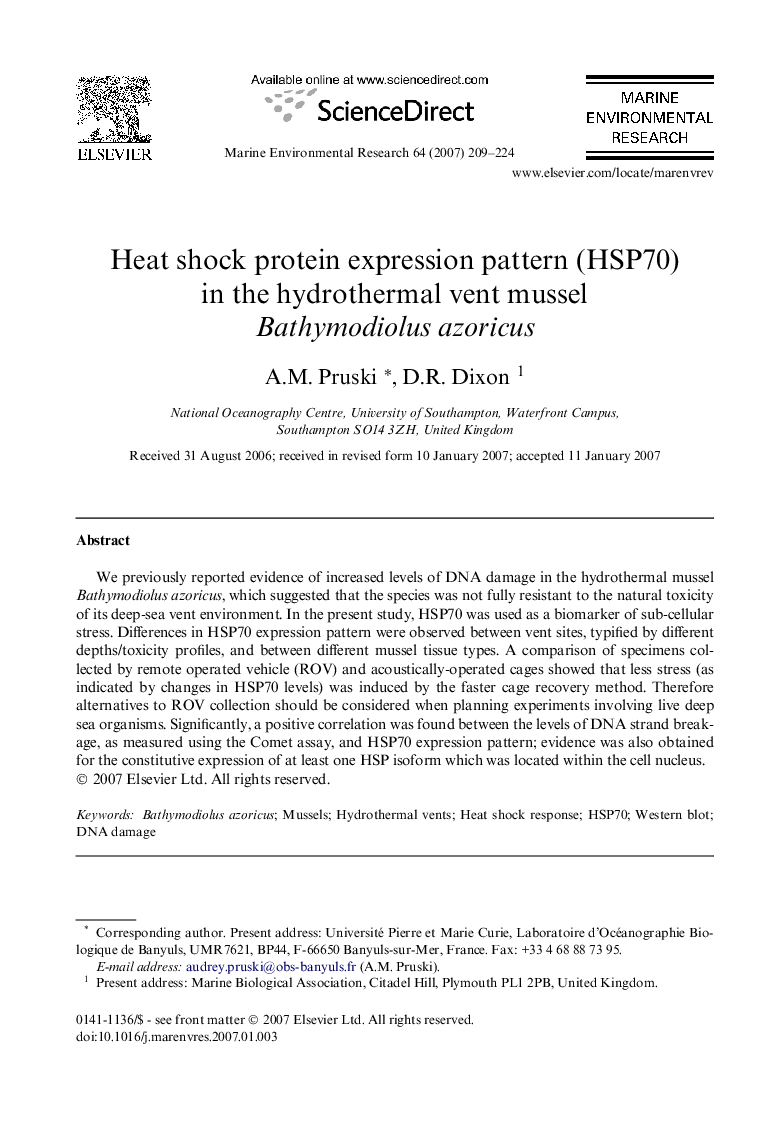| Article ID | Journal | Published Year | Pages | File Type |
|---|---|---|---|---|
| 4551908 | Marine Environmental Research | 2007 | 16 Pages |
We previously reported evidence of increased levels of DNA damage in the hydrothermal mussel Bathymodiolus azoricus, which suggested that the species was not fully resistant to the natural toxicity of its deep-sea vent environment. In the present study, HSP70 was used as a biomarker of sub-cellular stress. Differences in HSP70 expression pattern were observed between vent sites, typified by different depths/toxicity profiles, and between different mussel tissue types. A comparison of specimens collected by remote operated vehicle (ROV) and acoustically-operated cages showed that less stress (as indicated by changes in HSP70 levels) was induced by the faster cage recovery method. Therefore alternatives to ROV collection should be considered when planning experiments involving live deep sea organisms. Significantly, a positive correlation was found between the levels of DNA strand breakage, as measured using the Comet assay, and HSP70 expression pattern; evidence was also obtained for the constitutive expression of at least one HSP isoform which was located within the cell nucleus.
